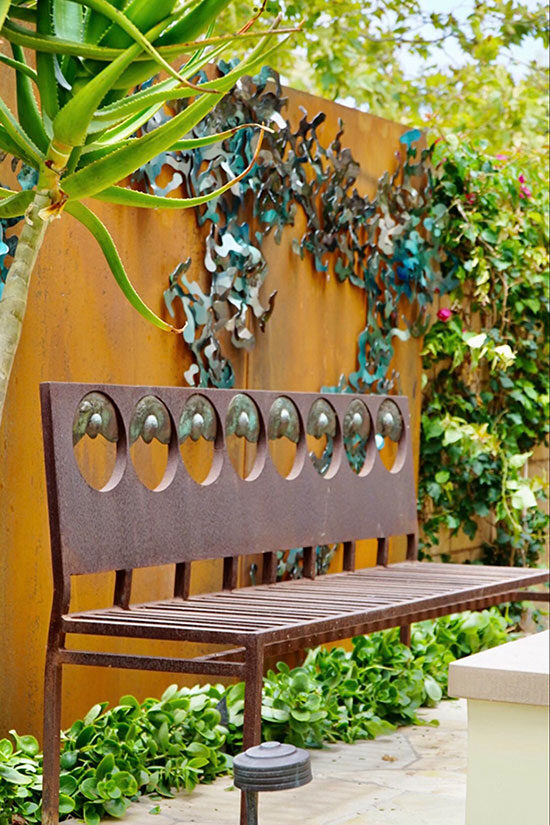Are Neuroscientists the New Architects?
July 25, 2022
Interior Designer Stephanie Parisi explores how “the rock stars of neuroscience” from Johns Hopkins University to the Salk Institute are taking note of architecture and design leading to elevated strategies for building and interior design.
International rock stars of science are coming up with ways to measure our responses to all things aesthetic, including architecture and design. Armed with technology such as brain scans, blood analysis and O2 and pulse rate read outs, scientists from around the world including Johns Hopkins, Yale and the Salk Institute are taking a very close look at how our environments affect our emotions, ability to focus and learn, stress levels and feelings of general well-being. According to interior designer Stephanie Parisi, who focuses on well-being as well as aesthetics in her work says “now, more than ever, designers need to provide meaningful experiences for people as they interact in and with environmental spaces. The relationship between design and well-being is fast becoming a focus for many design professionals.”
Designers have always known that the environment affects people. However, it is only recently that we have been able to quantify these effects with scientific data. This data is providing us with a deeper understanding of how design can be used to create positive experiences and improve well-being. As we learn more about the impact of design on human health, well-being and emotional response we will be able to create even better spaces that support and enhance our lives.
As a renowned professor and Chair at the Salk Institute for Biological Studies, Thomas Albright is uniquely qualified to speak on the subject of architecture and its impact on humans. Albright has spent his career studying information capacities of the brain, and he believes that a better understanding of the relationship between human response to build environments will lead to novel design principles. Through his work with the Academy of Neuroscience for Architecture, Albright has helped to advance knowledge in this area and promote dialogue between different disciplines. The Academy of Neuroscience for Architecture sponsors conferences, lectures and workshops to enhance cross-discipline knowledge sharing in the field. By bringing together leading experts from science and architecture, the Academy is working to advance understanding of how humans interact with their surroundings and built environments that better meet our needs.

“Good architects have lots of intuition, and that’s why good architecture works” says Albright. “Our hope is that we can identify principles backing up these intuitions that are more deeply rooted in knowledge about how the brain works.”
Johns Hopkins is also paying serious attention to well-being factors associated with the arts through their International Arts + Mind Lab which studies how the brain responds to the arts and aesthetic experience. This includes our reactions to all of the arts, music, poetry, dance etc. and includes natural and built environments. Their goal is also accelerate the role that arts and mind can play in serving health challenges such as Alzheimer’s, PTSD, autism, etc. and also apply their findings to enhance human potential in the general population.
Susan Magsamen, founder of the International Arts + Mind Lab, examines the impact aesthetics of art and architecture has on our sense of well-being.
As a society, we tend to think of aesthetics as being primarily about style or current fashion. Susan is finding that certain aesthetic choices can have positive effects on our health and well-being. The Lab’s installation “A Space for Being” was recently exhibited at the Milan Furniture Show, Salone del Mobiles. The multi-room installation showcased design using neuroaesthetics principles—including light, sound, scent, texture—and explored how our biology changes in different environments. According to Susan “Art and design have been used as healing tools since the beginning of humankind. Research is really just catching up to the why.”

Research is indeed catching up with hundreds of studies having been conducted and available for review. There are, of course, individual differences being found in response to environments based on culture, genetics and personal history. As one scientist explained “There is no such thing as a universal brain.”
However, the research is revealing certain universals as we know with certainty that stress levels, memory, healing rates and emotional states can be altered by the physical environment. Let’s take a look at some specific ingredients which appear to be universal in their power to affect human emotion and biology.
- Round lines and circles are more pleasing than angular lines and shapes. They relax the brain and elicit playful impulses and “approach” response. This refers to both architecture and objects in the space. Angular forms look sophisticated but we have an unconscious negative response to them.
- The shape of the room and objects in the room can influence emotions based on familiarity, symmetry, contrast, complexity and something called perceptual fluency which refers to how fluently one can process an object or space. The more fluent, the more positive the responses are to the object or space. It was noted that the more exposure subjects had to design, the more they enjoy a higher level of complexity.
- Stimulating environments with novelty, visual challenge and engagement stimulate parts of the brain connected with memory. Moderate degrees of visual complexity are best so that they are not overwhelming.
- Enriched interior spaces have been found to lead to brain cell growth…enrichment is created by the use of rounded shapes, natural elements, proper lighting for room function, tactile surfaces, colors appropriate for the function of the room and also scents in the room.
- Volume of space such as ceiling heights have been studies. Typically the high ceilings promote a feeling of freedom and promote independent thinking. Lower ceilings can create a sense of calm, increases ability to focus and support learning but can also elicit feelings of confinement.
- Symmetry in architecture, art and objects is perceived to be calming and peaceful. Overly orderly symmetrical environment need to include an occasional fractal shape to sustain attention.
- Colors affect us at an unconscious level. Saturated colors amplify emotions and more muted colors are calming. Blues are peaceful and encourage intellectual and creative thoughts and enhance productivity. Green brings people closer to nature so are perceived to be soothing. Warmer bold colors elicit energy and invoke positivity, cheerfulness and stimulate thinking.
- Natural light elevates positive mood. Circadian lighting helps one to track the passage of time. Blue and white light increase energy and mood but can disturb sleep. Red light improves mood and increases energy but disrupts circadian rhythms. Intense light from above creates negative tension. Reduced light from above creates relaxed states. Low light allows for more control over feelings and leads to more rational rather than emotional thinking. Bright lights lead to intense feelings. Lighting is being studied relative to heart rate variability, memory, stress levels, cognitive ability, etc.
- Tactile materials increase connection to a space and support states of calm and tranquility. How something feels is sensed primarily through our skin, a highly sensitive organ, so the feel of different surfaces are important. Consider door handles, contact with floors, texture and temperature of materials and also a mental aspect of imagining what an object or surface feels like. Reactions to natural materials such as wood, natural stones, metals, soft textured textiles are all comforting and positive.
- Natural features in a space are thought to give nourishment neurologically and improve mood, enhance memory, accelerate healing and recovery, improve focus and stimulate learning. Biomorphic elements in a space, views to the outdoors, flowers and plants, even artwork which mimics nature are extremely supportive leading to the results noted above. Some studies showed that viewing nature triggers parts of the brain associated with feelings or empathy and love.
- Water elements and even the sounds of flowing water trigger neurological responses of delight and serenity.
- Scents are an often forgotten potential aspect of design and architecture. Research has demonstrated beneficial effects of lavender and other scents associated with aroma therapy. As an example, exposure to lavender shows reduced stress, better sleep and enhanced recovery from illness. Fragrancing public spaces dates back over a hundred years to the opening of a cinema in Berlin in which a French perfume was deliberately wafted through the auditorium. More recently a custom fragrance for a luxury apartment complex in Miami. It will be interesting to explore future opportunities for signature scents for spaces.
We often hear the phrase “form follows function” in regards to design. Susan Magsamen has coined the phrase “form follows feeling” to describe how the right aesthetic choices can lead to positive experiences. Through the neurosciences we are developing a tool box of ingredients – shapes, light, color, scale, tactility, scent – which can inform and guide aesthetic decisions. The research is revealing how these ingredients can be used with purpose to bridge science and intuition bringing people, design and spaces we inhabit into the formula of supporting balanced lifestyles.
| Stephanie Parisi Design Studio
Copyright © 2023